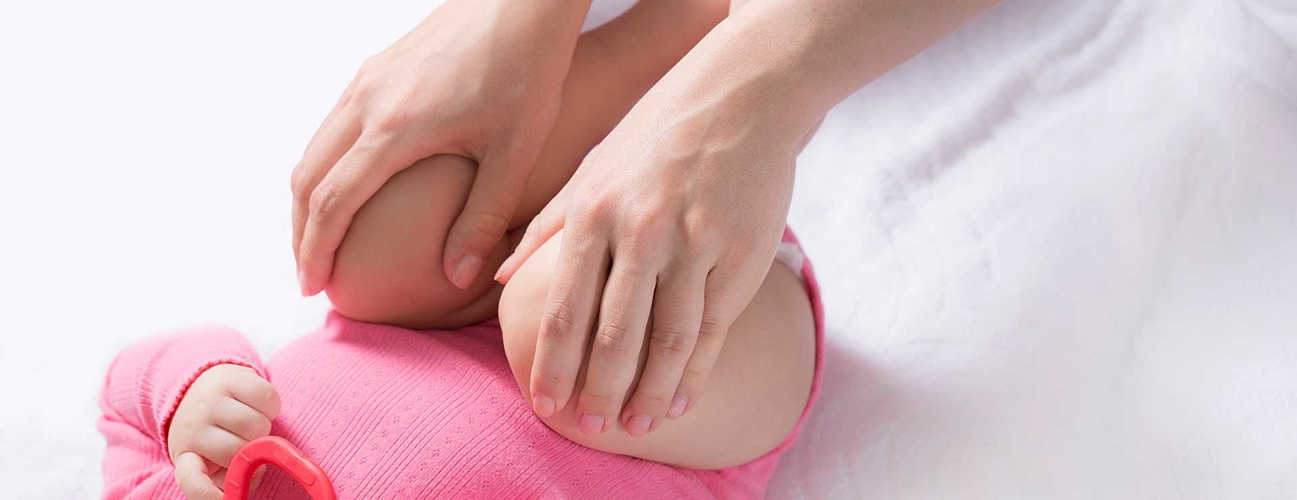Developmental Dysplasia of the Hip
What You Need to Know
- Developmental dysplasia of the hip often runs in families.
- If untreated, developmental dysplasia of the hip can lead to pain or problems with walking.
- Girls are more likely to have developmental dysplasia of the hip than boys.
- Treatment methods include bracing, casting and/or surgery to promote proper formation and position of the hip joint.
What is developmental dysplasia of the hip?
Developmental dysplasia of the hip (DDH) is a condition in which an infant’s hip joint is not forming properly. The “ball” part of the hip joint is not securely fitting into the “socket.”
What are the symptoms of developmental dysplasia of the hip?
Symptoms that may indicate developmental dysplasia of the hip include:
- Limb length inequality (legs with different lengths)
- Abnormal walking or gait
What are the risk factors of developmental dysplasia of the hip?
DDH is more commonly found in:
- Girls
- First-born babies
- Babies born in the breech or feet-first position
Developmental Dysplasia of the Hip Diagnosis
Testing varies with age of the patient. Ultrasound is used in patients less than 6 months of age. After 6 months of age, X-ray imaging is used. Patients will also be evaluated in the clinic with special maneuvers to assess the stability of the hip joint.
Understanding Deformity Around the Hip in Children and Young Adults Webinar
Watch our orthopaedic pediatrics expert, Aaron Brandt, M.D., as he discusses developmental hip dysplasia, slipped capital femoral epiphysis, Perthes Disease and other hip conditions in this webinar.
Developmental Dysplasia of the Hip Treatment
Treatment varies with age and the severity of the dysplasia. Some infants may be simply observed for a period of time to ensure the hip joints form properly.
Bracing
Some infants may require treatment with a special brace called a Pavlik harness. This brace is very effective and is used to position the baby’s legs to encourage better formation of the hip joint. It can be used up to about 4 months of age.
Casting
Casting is another method used to encourage proper formation of the hip joint in patients with a dislocated hip. A spica body cast is used to maintain the corrected hip position.
Surgery
In some cases, surgery may be required to place the “ball” of the joint back into the “socket.” The surgery may consist of correcting the ball or the socket or both, followed by spica body casting, to hold the corrected position. Sometimes there may also be tight muscles, preventing the ball from sitting in the socket. These muscles may be lengthened to allow for the ball to fit better into the socket.







